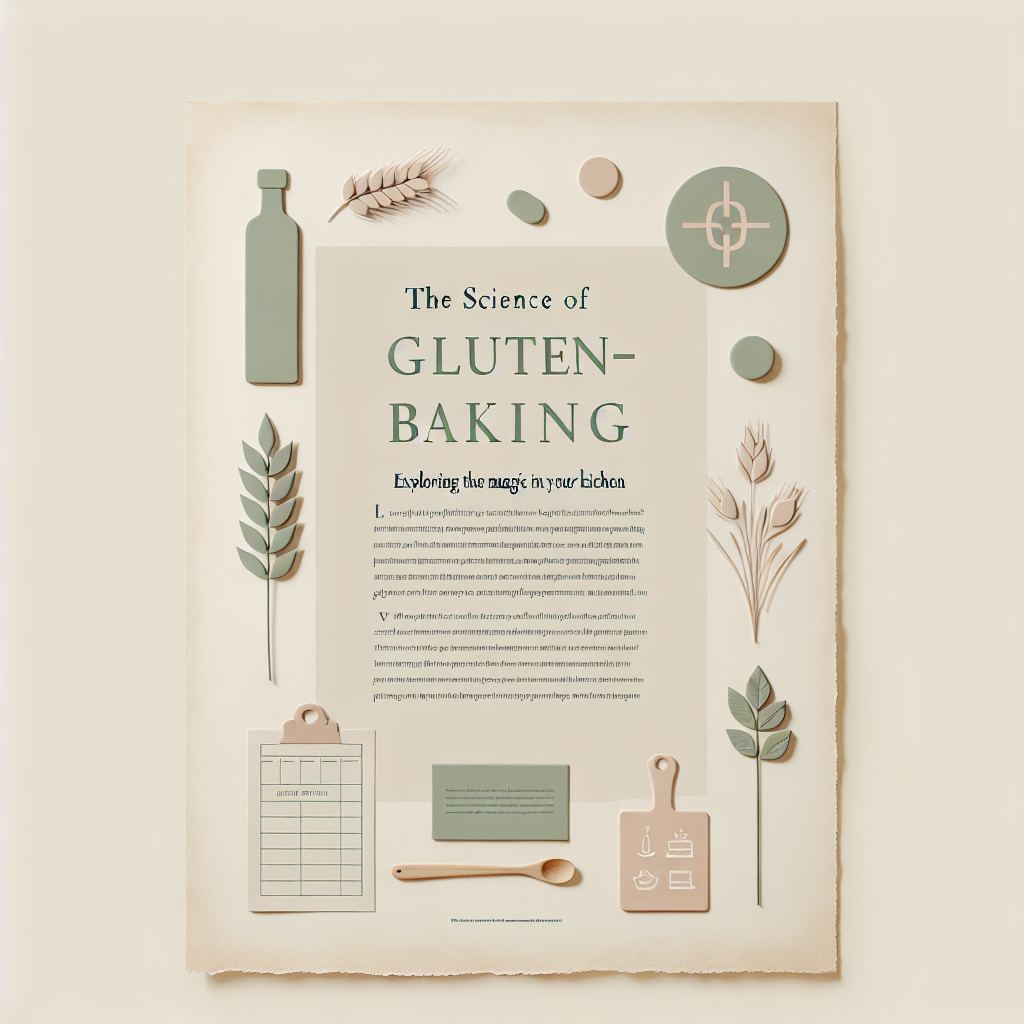You see, I’ve always been fascinated with the magic of transforming simple ingredients into something truly delightful, where flavors meld, textures play, and the senses sing. Yet, it was only after I had to embrace the gluten-free life that I actually appreciated the science behind this culinary magic. And trust me, when you understand this, the potential of your gluten-free kitchen increases tenfold!
Now, before you start picturing a chemistry lab in your kitchen, let me assure you, it’s nothing like that. It’s just about understanding a bit about how your ingredients interact, and using this knowledge to your advantage. So today, let’s explore the fascinating process of gluten-free baking, how it differs from traditional baking, and how to get it right every time. Intrigued? Let’s get started!
The first thing you need to know is about gluten itself. In a nutshell, gluten is a mixture of two proteins, found primarily in wheat, that gives dough its elasticity and baked goods their chewy structure. It’s like the construction worker of baking — building structure and adding strength. That’s why when you remove gluten from the equation, you’ll need to find alternatives that can do the work gluten used to.
Your gluten-free flour isn’t just replacing wheat flour. It has the mighty task of mimicking gluten’s properties too. There are many gluten-free flours to choose from like almond flour, coconut flour, buckwheat flour, and so on. But what you choose depends on what you’re baking. For instance, I love using almond flour for my [Gluten-free Almond Scones](http://easyglutenfree.com/almond-scones) and buckwheat flour for [The Fluffiest Buckwheat Pancakes](http://easyglutenfree.com/buckwheat-pancakes). But as a general rule of thumb, gluten-free baking flour mixes that include xanthan or guar gum work best as they add structure and moisture, mimicking the effects of gluten.
Now, let’s talk about leavening. Leaveners are real MVPs in gluten-free baking. Think of them as a best friend who lifts you up in the middle of a bad day. That’s what leaveners do for your dough — they give the lift and are responsible for the light and airy crumb in baked goods. In gluten-free baking, you might find yourself using a bit more baking powder or baking soda, or even yeast, compared to regular recipes. And that’s perfectly okay. But do remember to keep a balance and not go overboard as it can lead to a bitter aftertaste.
Then comes the role of fats. The beautiful thing about fats (butter, oils, yoghurt) in baking is that they can do so much more than just adding flavor. They can provide a much-needed moisture and richness that binds everything together, which by the way, is essential when you’re going gluten-free.
Now onto one of the trickier aspects: hydration. Getting the perfect level of moisture in your gluten-free baked goods can sometimes feel like you’re trying to solve a complex equation. Too much moisture and you could end up with a gummy product, but too little and your baked goods might turn out too dry or crumbly. Here’s a quick guide: Gluten-free flours, like coconut or rice flour, tend to absorb more liquid than conventional flour, so you may need to add additional liquid to keep the dough moist. And where do you find this extra moisture? Think beyond just water. Eggs, fruit purees, yoghurt – they all add moisture along with an extra layer of flavor, and they’re your secret to successful [Moist Gluten-Free Carrot Cake](http://easyglutenfree.com/carrot-cake)!
And lastly, patience. While traditionally, over-mixing dough can lead to tough baked goods, when it comes to gluten-free, more mixing can actually benefit the structure of your recipes. Take the time to ensure all ingredients are thoroughly combined and don’t rush the resting phase. Letting your dough or batter rest before baking helps hydrate the flour and results in a more even and pleasing texture.
And remember, as much as it is science, it is also an art, and art is all about experimenting! It’s about having fun trying different flours, figuring out just the right amount of liquid, and above all, enjoying the process. Because the best part of any culinary experiment is the delicious surprise we get at the end.
So don’t let the absence of gluten deter you. Take it as a challenge to reimagine your favorite recipes and understand the power of each ingredient. And if you need inspiration, browse through some of my favorite [Gluten-free Recipes](http://easyglutenfree.com/recipes) available on our website.
Here’s to venturing into a world of baking where the limits are only defined by your imagination!
**Category: Baking & Cooking Science**


